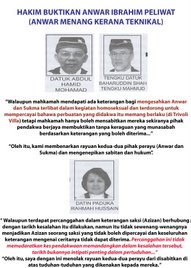SINGAPORE, May 20 (Bernama) -- Sometimes, circumstances have it that you just can't help but overhear what other people say even when you try not to listen to it.
Like this one between two men in their 50's who were talking animatedly as the bus that would take them to Johor Baharu from Singapore was approaching the Woodlands checkpoint.
The topic: Singapore-Malaysia relations and whether things have returned to normal again.
The other man chuckled as he said that returning to normal relations was not necessarily a good thing.
When his friend asked, "why not", the answer was that the only thing normal about the relations was that "it is always going to be up and down, up and down..."
He said there were times in the past when "normal" would mean to always quarrel. His buddy chuckled along heartily.
The conversation took place amid the splash of headlines in the wake of the recent retreat between Singapore Prime Minister Lee Hsien Loong and his Malaysian counterpart Datuk Seri Abdullah Ahmad Badawi in Malaysia's resort island of Langkawi.
Many observers felt that the meeting had opened up a new chapter in the Singapore-Malaysia relations.
As the leaders emerged from their talks in Langkawi, they told the media that they had agreed to form a joint ministerial committee to oversee cooperation in the Iskandar Development Region (IDR), a multi-sectoral project on a 2,217 sq km area in south Johor, bordering Singapore.
Lee spoke of the need for both countries to work to bring the relations to a new level. As for the unresolved issues between Malaysia and Singapore, Lee admitted they were difficult ones to resolve but said they must be tackled in a manner that was acceptable to both countries.
Analysts described outcome of the meeting in invariably positive terms.
To former Singapore High Commissioner to Malaysia K. Kesavapany, the meeting had "broke new ground in dealing with bilateral issues."
"Instead of harking back to old issues that bedevilled ties till 2003 when Datuk Seri Abdullah became Prime Minister, the two leaders decided to look ahead and focus on areas in which the two countries could cooperate," he wrote in The Straits Times.
"This does not mean the unresolved would be ignored, just that they will no longer be obstacles to progress," said Kesavapany, who is now director of the Institute of Southeast Asian Studies.
Kesavapany, who was the republic's High Commissioner to Malaysia from 1997 to 2002 -- a period he once described as the "most difficult years in the history of Singapore-Malaysia relations" -- said references made at the Langkawi meeting showed bilateral disputes will now be dealt with "in a more business-like manner".
The Singapore media hailed the latest development in the Singapore-Malaysia relations with The Business Times saying that leaders of both countries had "boldly move with times".
"Cooperation, wherever possible, with balance of benefits as the core mantra, is the only path left for Singapore and Malaysia to tread, or for other Asean nations to follow," the paper said in an editorial.
Now that Singapore has amply made clear its economic interest in the IDR, the project could be the test bed for more Asean boom towns, it added.
But the paper cautioned however, that the project should not be vulnerable to future political changes and bilateral upheavals. "Investors should have enough safeguards to operate and flourish," it said.
Getting "seeded" early with quality Singaporean investments, aside from indigenous Malaysian funds, would give IDR the confident start that will help it get noticed internationally, The Straits Times said.
"Like Shenzen, Iskandar will enhance its appeal greatly if it would willingly feed off Singapore's energy and creative input," the paper said in its editorial.
The paper added that the process has to be accepted by Malaysian politicians, chiefly from Umno, and ground opinion in Johor.
Kesavapany put it in another way. "What remains is for sentiment on the ground in Malaysia to be convinced of what its leaders know: that Singapore's gain will not be Malaysia's loss. Datuk Seri Abdullah would not have invited Singaporean participation in the IDR had Malaysian loss been the expected outcome."
Just three days after the Langkawi meeting, the Malaysian High Commission in Singapore led by High Commissioner Datuk N. Parameswaran got cracking by taking nearly 50 Singaporean businessmen for a day's familiarisation trip to the IDR.
The businessmen, who are from the Singapore International Chamber of Commerce, saw the potential, notably its low operational costs but some said they would wait-and-see before investing in the area. Others voiced out concerns over crime rates in Johor.
But even as both leaders explore new areas of cooperation, there remained the list of outstanding issues that are still to be resolved, among them the price of water sold to Singapore, the use of Malaysian airspace by the Singapore air force, the development of KTM Bhd land in Singapore and the withdrawal of Central Provident Fund contributions from Malaysian workers in Singapore.
Although water issues is still listed as "unresolved" in the media, Singapore, in the meantime, had made progress in its effort to be self-sufficient in water supply after it successfully tapped on alternative water supplies through Newater and sea water desalination.
In 2011, the 1961 Water Agreement would expire, but having made progress with alternative sources of water, Singapore indicated that it would let the agreement to lapse.
By 2061, another agreement, the 1962 Water Agreement will expire and according to the republic's Public Utilities Board, by then Singapore "can be totally self-sufficient, if there is no new water agreement with Malaysia."
Then there is still the issue of a new bridge to replace the 82-year-old Johor Causeway. Having scrapped the project slightly over a year ago, Malaysia is reportedly keen to revive the proposal.
Malaysia's Foreign Minister Datuk Seri Syed Hamid Albar expressed Malaysia's interest to start fresh negotiations on the bridge with Singapore.
"The bridge is important because I think we want to give a different face to the southern gate to Malaysia. We are very happy to be integrated together on the (Singapore's) MRT (mass rapid transit), and it will serve well both sides, Singapore as well as the internal IDR," he said in a Channel NewsAsia report.
It is not clear yet what is Singapore's position on the bridge issue this time around, if at all a fresh negotiation is on the cards. The republic had stated in previous negotiations that it would only participate in the project if there were balance of benefits to both sides.
In September last year, Minister Mentor Lee Kuan Yew, still an influential figure in the Singapore cabinet, said Singapore must have the gumption to say "no" to its neighbours. "For no rhyme or reason, we knock down a causeway, nearly 100 years old, which served us well," the senior Lee had said.
It remains to be seen in the years ahead where the relations would be heading -- to a greater height or to return to "normal".
tunku : where were singapore before this? only after IDR plan revealed suddenly these people are keen to be more friendly with us. singapore high commissioner said that we do not hark on old issue, they want us to forget what are the old issue and just give them opportunity in IDR.furthermore malaysian ambassador in singapore did bring 50 singapore's busineesman to visit the IDR region for them to be familiarized.singapore we open our arm widely,come and rob us in daylight as our leaders now are too generous.





























No comments:
Post a Comment